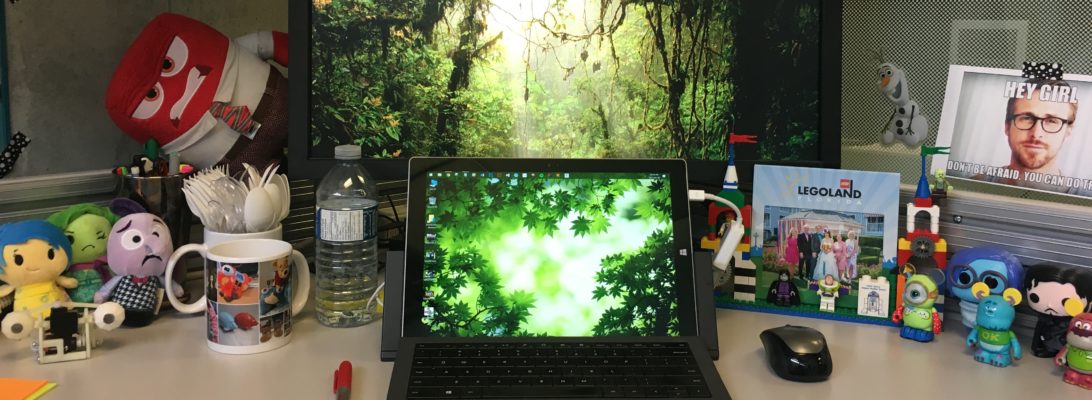
We just couldn’t resist not getting Mickey Graduate Ears!


We just couldn’t resist not getting Mickey Graduate Ears!

Abstract:
Although pens and paper are pervasive in the analog world, their digital counterparts, styli and tablets, have yet to achieve the same adoption and frequency of use. To date, little research has identified why inking experiences differ so greatly between analog and digital media or quantified the varied experiences that exist with stylus-enabled tablets. By observing quantitative and behavioural data in addition to querying preferential opinions, the experimentation reaffirmed the significance of accuracy, latency, and unintended touch, whilst uncovering the importance of friction, aesthetics, and stroke beautification to users. The observed participant behaviour and recommended tangible goals should enhance the development and evaluation of future systems.

Abstract:
Recent advances in hardware have enabled researchers to study the perception of latency. Thus far, latency research has utilized simple touch and stylus-based tasks that do not represent inking activities found in the real world. In this work, we report on two studies that utilized writing and sketching tasks to understand the limits of human perception. Our studies revealed that latency perception while inking is worse (~50 milliseconds) than perception while performing non-inking tasks reported previously (~2-7 milliseconds). We also determined that latency perception is not based on the distance from the stylus’ nib to the ink, but rather on the presence of a visual referent such as the hand or stylus. The prior and current work has informed the Latency Perception Model, a framework upon which latency knowledge and the underlying mechanisms of perception can be understood and further explored.
Although every accepted paper is cause for celebration, I am especially happy that this paper was accepted because the proposed Latency Perception Model is a nice summary of all the latency work that has been done by myself and others thus far. Here is the YouTube video summarizing our work:



The HPSS was built by Albert Ng and Paul Dietz, who collaborated previously on the High Performance Touch System that you can see here on YouTube. The psychophysical just-noticeable difference studies were incepted, conducted, and analyzed by me! Anoop Gupta and my supervisor Walter acted as mentors on the project.
Abstract:
While pen computing has become increasingly more popular, device responsiveness, or latency, still plagues such interaction. Although there have been advances in digitizer technology over the last few years, commercial end-to-end latencies are unfortunately similar to those found with touchscreens, i.e., 65 – 120 milliseconds. We report on a prototype stylus-enabled device, the High Performance Stylus System (HPSS), designed to display latencies as low as one millisecond while users ink or perform dragging tasks. To understand the role of latency while inking with a stylus, psychophysical just-noticeable difference experiments were conducted using the HPSS. While participants performed dragging and scribbling tasks, very low levels of latency could be discriminated, i.e., ~1 versus 2 milliseconds while dragging and ~7 versus 40 milliseconds while scribbling. The HPSS and our experimentation have provided further motivation for the implementation of latency saving measures in pen-based hardware and software systems.
These questions lead me towards thinking about the core principles behind horizontal-based gestures, multi-finger interaction, and multi-touch interfaces, as well as motor learning, skill acquisition, and skill transfer. With all these great questions swirling around in my head, I have decided to switch gears and focus my forthcoming research on a number of the unanswered questions that exist with multi-touch gestures and look at them through a motor learning-inspired magnifying glass. Until next time!